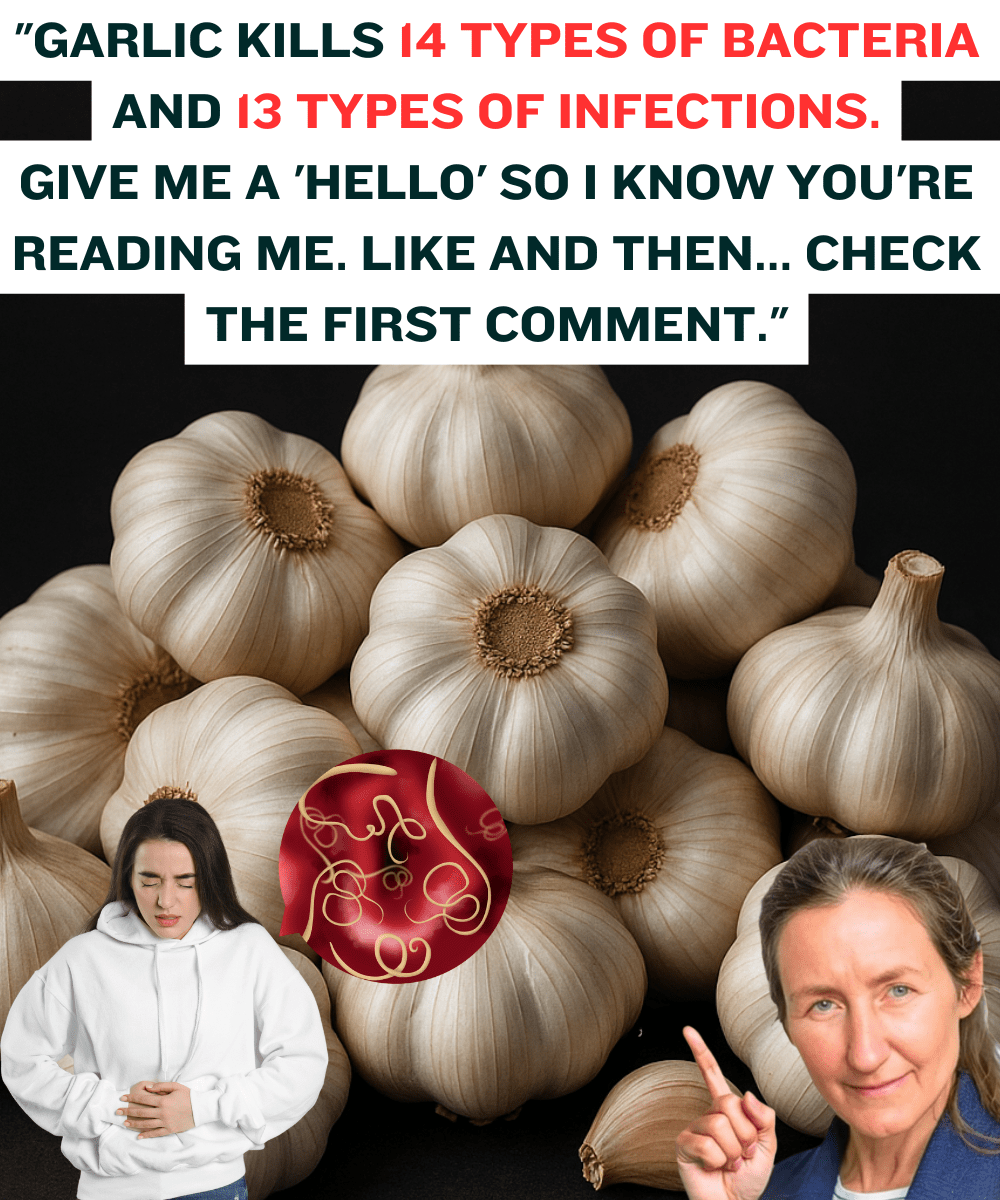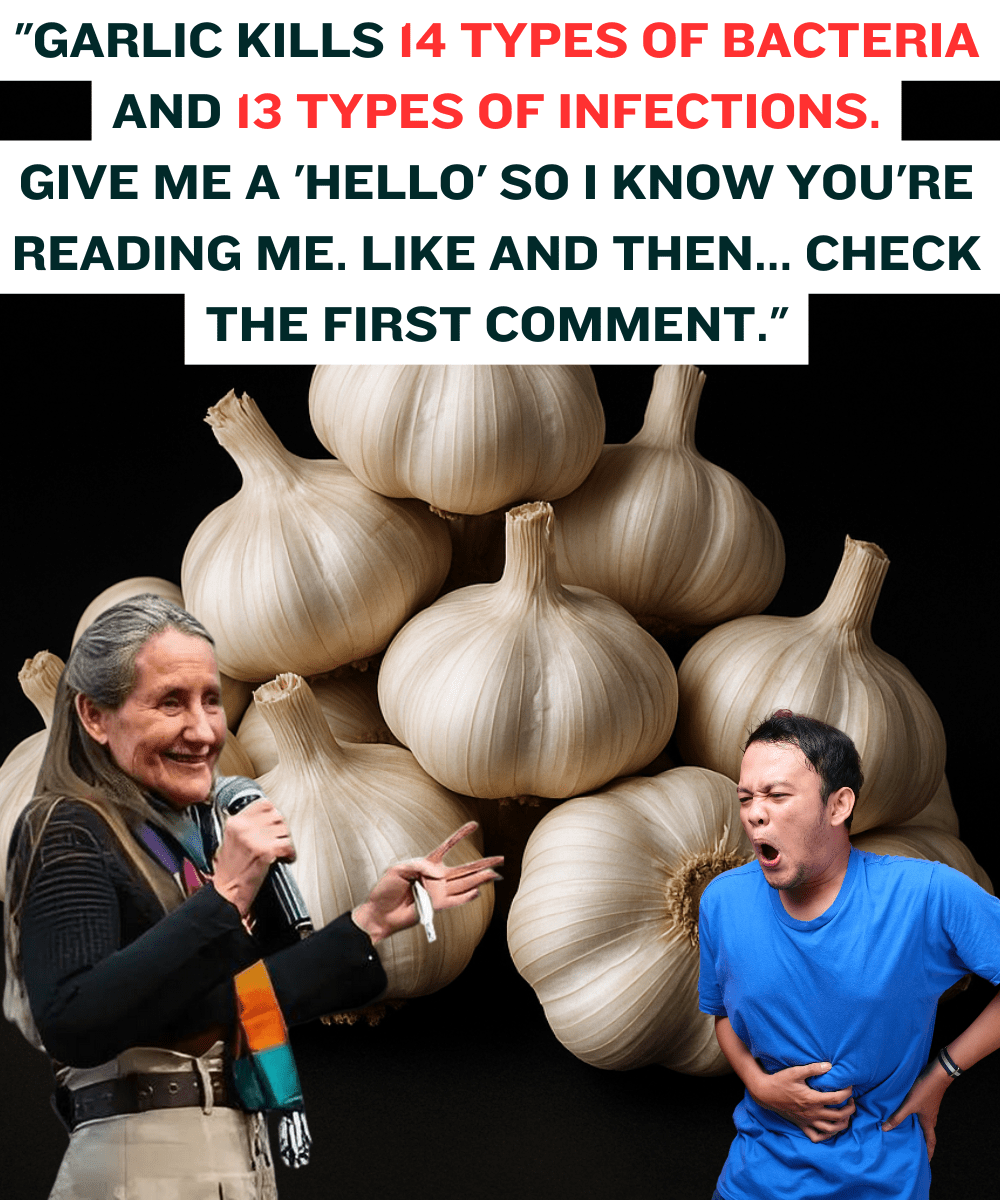For millennia, one unassuming bulb has held a prized spot in kitchens and apothecaries across every major civilization: garlic. Beyond its pungent flavor and undeniable culinary charm, tales of its miraculous healing power have persisted, elevating it from a simple ingredient to a legendary folk remedy. But in the age of modern medicine and the terrifying rise of superbugs—antibiotic resistant bacteria that threaten to undo a century of medical progress—we must ask a critical question: Is the claim that garlic kills a specific number of bacteria and infections a hyperbolic legend, or is it a scientifically proven truth that holds the key to the next generation of natural antibiotics?
The assertion that “garlic kills 14 types of bacteria and 13 types of infections” is a fascinating example of how scientific fact gets popularized and, often, slightly distorted. While specifying exact, rigid numbers can be misleading and is rarely used in academic literature, the underlying truth is undeniable and far more profound: Garlic is a broad spectrum antimicrobial powerhouse whose scope of action is so vast it rivals many synthetic compounds. It’s not about the count of 14 and 13, but the chemical genius hidden within each clove.
This extensive exploration will dive deep into the biochemistry of Allium sativum, separating the historical myth from the cutting edge science. We will reveal the active compounds that launch garlic’s war against pathogens, examine its impact on drug resistant strains, and explain why this ancient remedy is becoming a vital tool in the modern fight against infectious disease. Prepare to have your perception of this common kitchen staple fundamentally changed.

The Active Ingredient Allicin and the Sulfur Weaponry
The antimicrobial magic of garlic is not due to the entire clove, but to a dynamic chemical reaction that occurs when the clove is crushed, chopped, or chewed.
The Enzymatic Explosion: Allicin’s Genesis
The Dormant State (Alliin): In an intact garlic clove, the key compound is Alliin, a non odorless sulfur molecule, safely stored within the cells.
The Awakening (Alliinase): When the clove is damaged, a compartmentalized enzyme called Alliinase rushes out to meet Alliin. This immediate reaction is the plant’s natural defense mechanism against pests and microbial invaders.
The Creation of the Weapon (Allicin): The reaction instantaneously produces Allicin (diallyl thiosulfinate), the highly volatile, intensely pungent compound responsible for garlic’s signature smell and its phenomenal biological activity. Allicin is a chemically unstable compound that quickly breaks down into dozens of other beneficial organosulfur compounds, including ajoenes and diallyl sulfides (DAS, DADS, DATS), all of which contribute to its medicinal properties.
How Allicin Fights the War on Germs
Allicin and its derivatives do not simply stop bacteria from growing; they launch a full scale chemical assault with multiple mechanisms of action, making it incredibly difficult for pathogens to develop resistance.
Protein Deactivation: Allicin works by reacting strongly with the sulfhydryl groups of various proteins and enzymes inside bacteria, fungi, and viruses. It essentially “clogs” the machinery that these pathogens need to function, metabolize, and reproduce, leading to their rapid destruction.
DNA and RNA Disruption: Research indicates that the compounds interfere with the synthesis of DNA and RNA, crippling the bacteria’s ability to replicate and pass on genetic material.
Membrane Damage: The oil soluble nature of many organosulfur compounds allows them to penetrate the bacterial cell membrane, causing structural and functional damage.
The Broad Spectrum of Garlic’s Antimicrobial Reach
While the original claim of “14 types of bacteria and 13 types of infections” is a numerical simplification, the scientific literature confirms that garlic’s spectrum of activity is incredibly broad, encompassing not just bacteria, but also fungi, viruses, and parasites.
Targeting Bacteria: Gram Positive and Gram Negative
Garlic compounds have been extensively studied in vitro (in the lab) and have shown efficacy against a diverse range of bacterial strains, covering both the major classifications:
- Gram Positive Bacteria: This group includes pathogens responsible for many skin, lung, and soft tissue infections. Garlic has shown potent inhibitory activity against:
- Staphylococcus aureus (including MRSA): The formidable Methicillin resistant Staphylococcus aureus (MRSA), one of the most feared superbugs, has shown significant susceptibility to allicin in various studies. This is a critical finding in the search for alternatives to failing antibiotics.
- Streptococcus species: Responsible for conditions like strep throat and certain types of pneumonia.
- Enterococcus faecalis: A common cause of hospital acquired infections.
- Gram Negative Bacteria: These bacteria often possess a complex outer membrane that makes them harder to treat with conventional antibiotics. Garlic still manages to penetrate and inhibit growth of key strains:
- Escherichia coli (E. coli): A common cause of food poisoning and urinary tract infections (UTIs).
- Salmonella typhi: The causative agent of typhoid fever.
- Pseudomonas aeruginosa: A notorious, difficult to treat organism often found in hospital settings and chronic wounds.
Beyond Bacteria: Fungi, Viruses, and Parasites
The claim about “13 types of infections” is likely a reference to garlic’s efficacy against other classes of pathogens that cause infectious diseases:
Antifungal Power: Garlic is highly effective against various fungi, most notably Candida albicans, the common cause of thrush and yeast infections. Its compounds disrupt the fungal cell membrane, leading to cell death.
Antiviral Properties: Research suggests that specific garlic compounds may interfere with the entry and replication cycles of certain viruses, including influenza and some rhinoviruses (common cold).
Antiparasitic Action: Garlic has a history of traditional use against intestinal parasites and has demonstrated activity against organisms like Giardia and various worms.
The Modern Medical Imperative The Battle Against Resistance
The true value of garlic in the 21st century lies in its unique ability to combat antibiotic resistance, one of the most pressing global health crises.
Combating the Superbugs (MDR Strains)
Many pathogens develop resistance to traditional antibiotics by altering their cell walls, producing neutralizing enzymes, or forming protective structures called biofilms. Garlic’s compounds have been shown to:
- Disrupt Biofilms: Biofilms are sticky, protective layers that bacteria build around themselves, making them virtually impervious to antibiotics. Ajoenes, derived from allicin, have demonstrated the remarkable ability to break down these films, exposing the bacteria to the body’s immune system or to other treatments.
- Enhance Drug Sensitivity (Synergism): In laboratory settings, fresh garlic extract has shown a powerful synergistic effect. When combined with conventional antibiotics, it often lowers the Minimum Inhibitory Concentration (MIC) required for the antibiotic to be effective, essentially ‘re sensitizing’ resistant bacteria to existing drugs. This opens a promising pathway for combination therapies that leverage both natural and synthetic medicine.

Translating Lab Results to the Kitchen and Clinic
While the in vitro data on garlic is overwhelmingly positive, it is essential to bridge the gap between a petri dish experiment and real world health application.
Form Matters: The process of preparation is everything. Allicin is highly volatile and quickly degrades with heat. Maximum benefits are achieved by crushing or chopping fresh, raw garlic and allowing it to sit for 5 to 10 minutes before consumption. This “activates” the alliinase enzyme, maximizing allicin production. Cooking garlic immediately largely destroys the alliinase enzyme and reduces the potent antimicrobial effect.
Standardized Supplements: For therapeutic use, standardized garlic supplements (often aged garlic extract or processed to retain allicin stability) are necessary to ensure a consistent, high dose of active compounds that can survive the digestive process and reach therapeutic levels in the body.
Not a Substitute: While incredibly promising, garlic should not be used as a replacement for prescribed antibiotics in cases of serious infection. It remains a powerful complementary tool that can be used preventively, as an immune support, and as part of a holistic approach under medical guidance.
Conclusion: A Timeless Sentinel in the Health Arsenal
The claim that garlic kills a set number of infections is an oversimplification, but it points to a profound truth: garlic is one of nature’s most effective, broad spectrum antimicrobial agents. Its dynamic organosulfur compounds, particularly allicin and its breakdown products, are chemical masters that can deactivate essential bacterial proteins, disrupt DNA, and even dismantle the protective biofilms of superbugs like MRSA.
As the world grapples with escalating antibiotic resistance, this common bulb is no longer just a seasoning; it is a critical subject of medical research. By respecting the power of the fresh, raw clove and understanding the science behind its legendary status, we can fully integrate this ancient warrior into our modern defense against pathogens, securing our health for the future. The conversation is not over, but the evidence is clear: Garlic is a natural force of nature that we cannot afford to ignore.